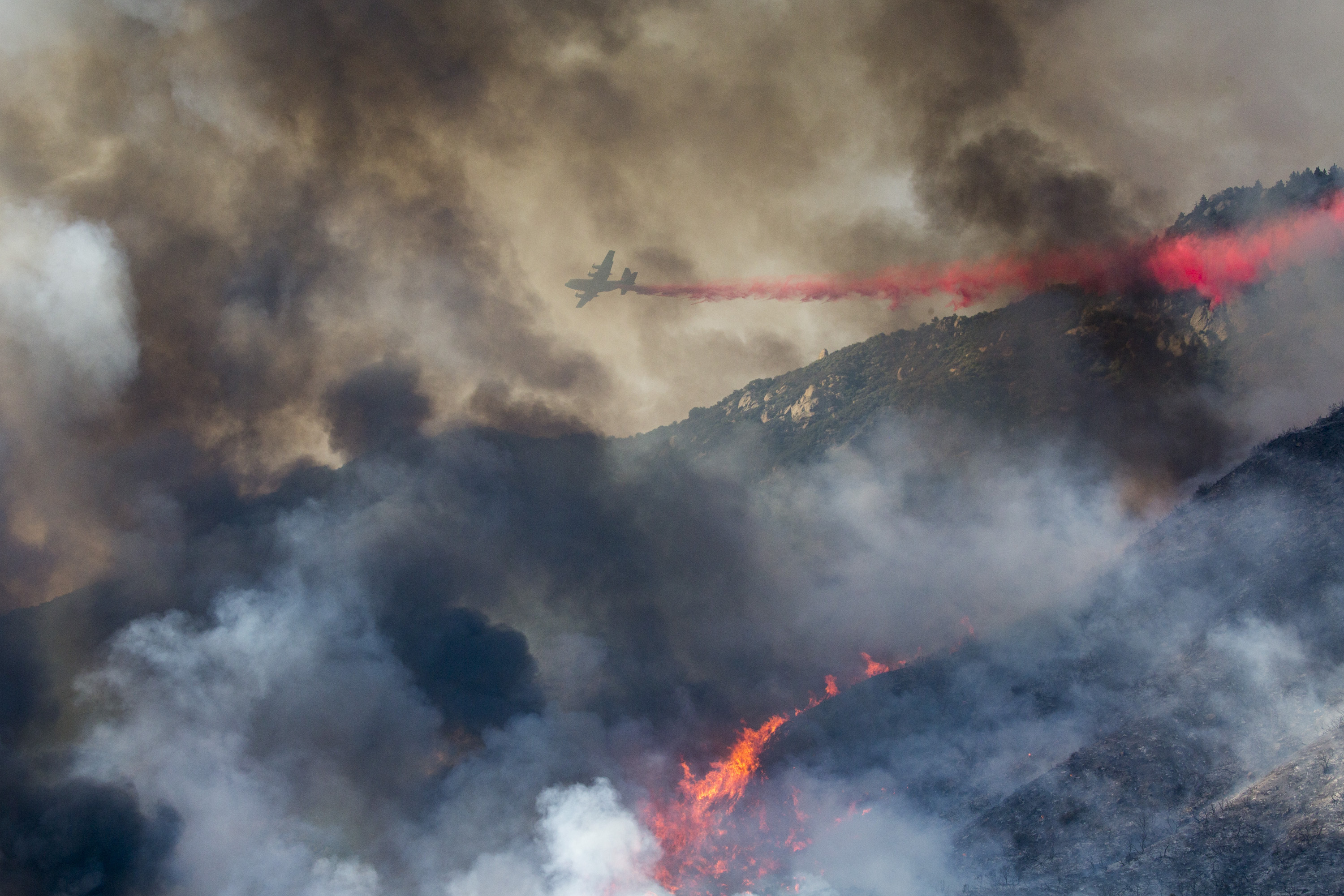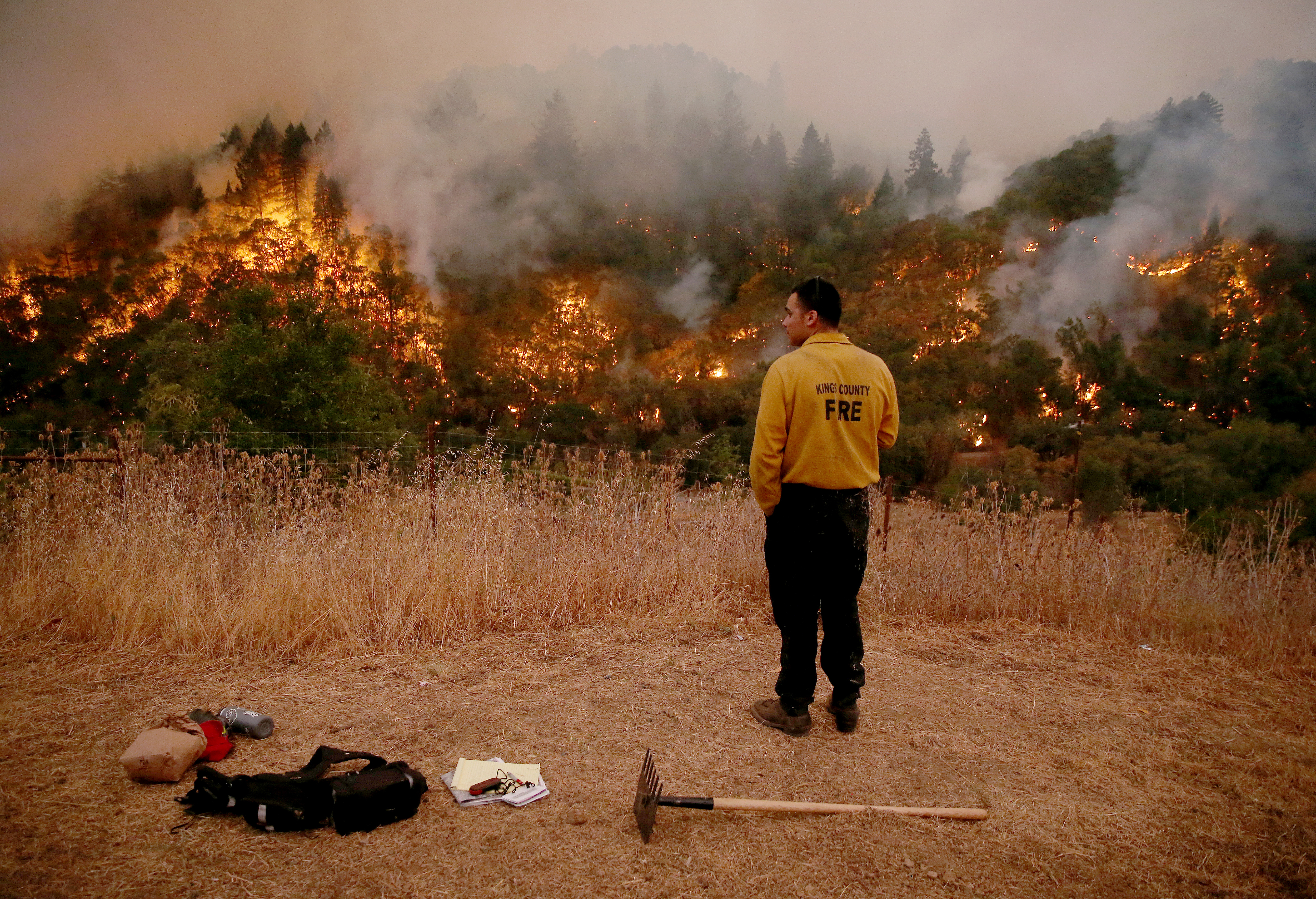Wildfires have burned more than 2 million acres in California this year, setting a state record even as crews battled dozens of growing blazes in sweltering temperatures Monday that strained the electrical grid and threatened power outages for millions.
The most striking thing about the record is how early it was set, with the most dangerous part of the year ahead, said Lynne Tolmachoff, spokeswoman for the California Department of Forestry and Fire Protection, or Cal Fire.
“It’s a little unnerving because September and October are historically our worst months for fires,” she said. “It’s usually hot, and the fuels really dry out. And we see more of our wind events.”
Get top local stories in San Diego delivered to you every morning. Sign up for NBC San Diego's News Headlines newsletter.
The previous high was 1.96 million acres (793,184 hectares) burned in 2018. Cal Fire began tracking the numbers in 1987.
Firefighters struggled to corral several dangerous blazes ahead of dry, hot winds predicted to raise fire danger to critical levels in the coming days. Evacuation orders were expanded to more mountain communities as the largest blaze, the Creek Fire, churned through the Sierra National Forest.
Debra Rios wasn't home when the order came to evacuate her hometown of Auberry, just northeast of Fresno. Sheriff's deputies went to her ranch property to pick up her 92-year-old mother, Shirley MacLean. They reunited at an evacuation center.
“I hope like heck the fire doesn't reach my little ranch,” Rios said. “It’s not looking good right now. It’s an awfully big fire.”
Mountain roads were filled with cars and trucks leaving the community of about 2,300 people.
Firefighters working in steep terrain saved the tiny town of Shaver Lake from flames that roared down hillsides toward a marina. About 30 houses were destroyed in the remote hamlet of Big Creek, according to resident Toby Wait.
“About half the private homes in town burned down,” he said. “Words cannot even begin to describe the devastation of this community.”
A school, church, library, historic general store and a major hydroelectric plant were spared in the community of about 200 residents, Wait told the Fresno Bee.
California Wildfires Coverage
Sheriff's deputies went door to door to make sure residents were complying with orders to leave. Officials hoped to keep the fire from pushing west, possibly toward Yosemite National Park.
The Creek Fire has charred more than 114 square miles (295 square kilometers) of timber after breaking out Friday. The 850 firefighters on the scene had yet to get any containment.
On Saturday, rescuers in military helicopters airlifted 207 people to safety after flames trapped them in a wooded camping near Mammoth Pool Reservoir.
Record-breaking temperatures were driving the highest power use of the year, and transmission losses because of wildfires have cut into supplies. The California Independent System Operator that manages the state’s power grid warned of possible power outages if residents didn’t curtail their electricity usage. None have yet to occur.
The weather was predicted to cool later in the day, but the weather change also was expected to bring winds that could fan wildfires.
Pacific Gas & Electric warned it might cut power starting late Monday to about 158,000 customers in parts of 21 Northern California counties because of the increased fire danger. Some of the state’s largest and deadliest fires in recent years have been sparked by downed power lines and other utility equipment.
PG&E received criticism for its handling of previous planned outages. The utility said it has learned from past problems, “and this year will be making events smaller in size, shorter in length and smarter for customers.”
In Southern California, crews scrambled to douse several fires that roared to life in searing temperatures, including one that closed mountain roads in Angeles National Forest and forced the evacuation of Mount Wilson Observatory. Cal Fire said a blaze in San Bernardino County called the El Dorado Fire started Saturday morning and was caused by a smoke-generating pyrotechnic device used by a couple to reveal their baby's gender.
In eastern San Diego County, a fire destroyed at least 10 structures after burning 16 square miles (41.44 square kilometers) and prompting evacuations near the remote community of Alpine.
Daytime temperatures in fire zones neared or exceeded triple digits. Downtown Los Angeles reached 111 degrees (44 Celsius) on Sunday and a record-shattering high of 121 degrees (49.4 Celsius) was recorded in the nearby Woodland Hills neighborhood of the San Fernando Valley. It was the highest temperature ever recorded in Los Angeles County, according to the National Weather Service.
Meanwhile, downtown San Francisco set a record for the day with a high of 100 (37.7 Celsius) on Sunday, smashing the previous mark by 5 degrees.
Cal Fire said 14,800 firefighters were battling 23 major fires in the state. California has seen 900 wildfires since Aug. 15, many of them started by an intense series of thousands of lightning strikes. There have been eight fire deaths and more than 3,300 structures destroyed.
Weber reported from Los Angeles.



